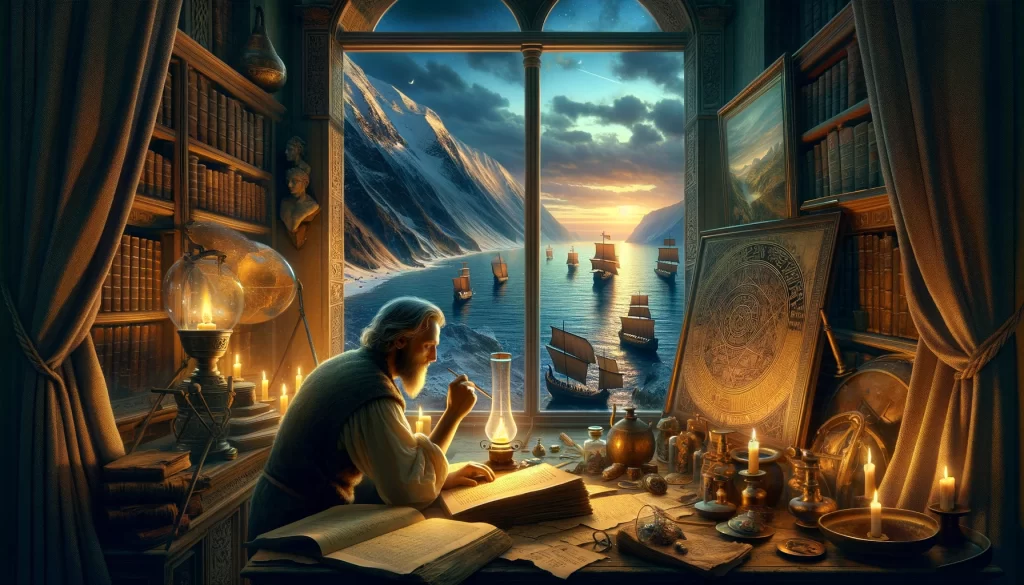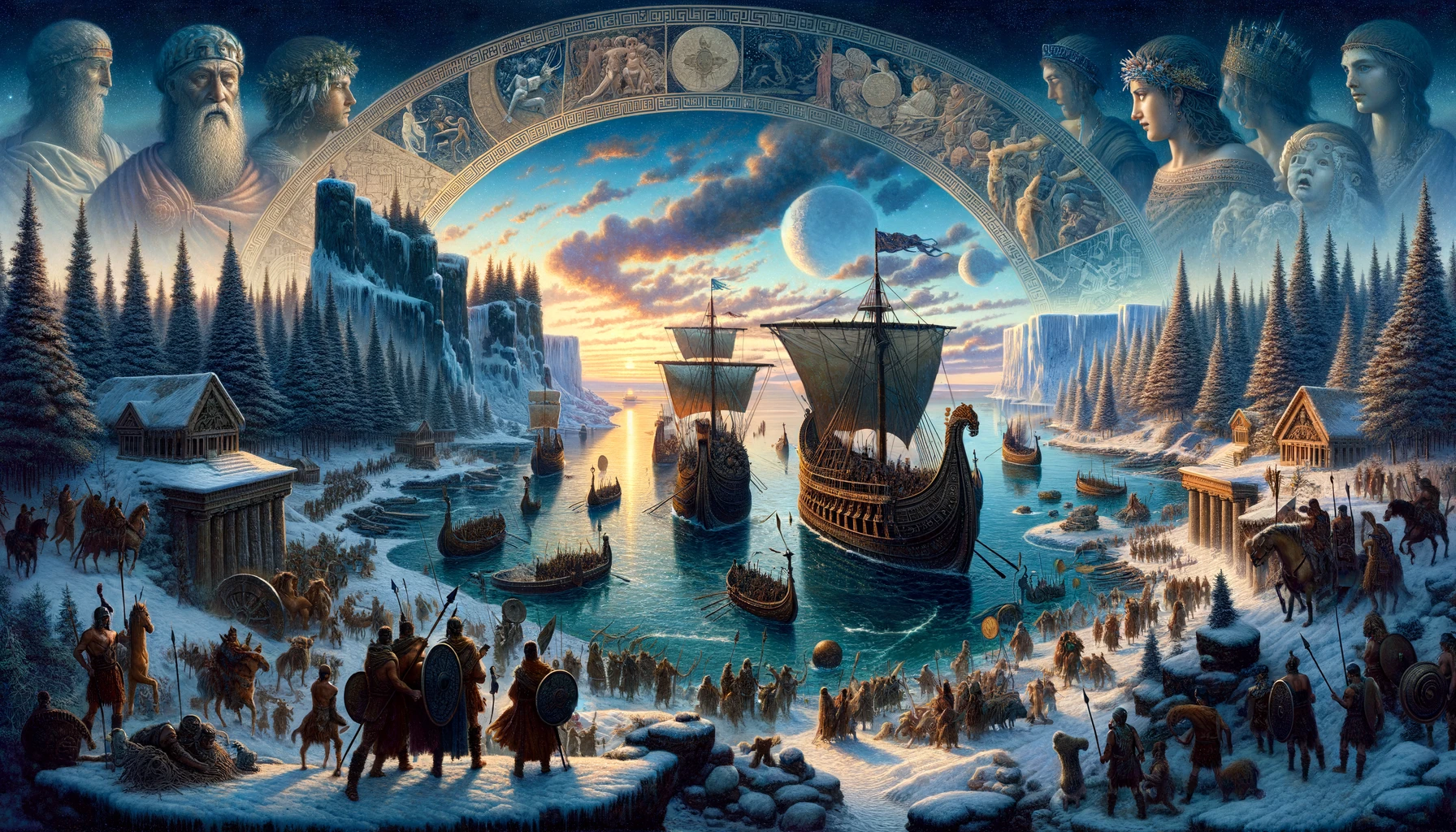Imagine you’re reading a story about Ulysses, a hero from ancient times, who had to wrap himself in an old cloak to avoid freezing to death. This story, part of a famous work called the Odyssey by Homer, seems a bit odd because it doesn’t really match the warm, sunny climate we associate with the Mediterranean, where these tales are supposed to happen. But Felice Vinci, a nuclear engineer who loves history, thought there was more to this story. He noticed many such details in the Odyssey and its companion epic, the Iliad, which tells of the Trojan War, that didn’t quite fit with their supposed settings.
Vinci came up with a stunning idea: What if these stories, which are central to ancient Greek culture and have influenced Western civilization, didn’t happen in Greece or the Mediterranean but near the Baltic Sea in northern Europe? It’s a bold claim, and as the saying goes, “extraordinary claims require extraordinary proof.” Vinci believes he has that proof. In his book, *The Baltic Origins of Homer’s Epics*, he points out things like the cool, foggy weather and snow mentioned in Homer’s works, which are more typical of northern Europe. He also talks about geographical and topographical clues that seem misplaced if we think the stories happen around Greece. For example, he suggests that the real locations of places like Troy, Chios, and Pylene might be in modern-day Finland, Estonia, and Germany, respectively.
Vinci’s theory is that during a period known as the Holocene Climate Optimum, when northern Europe was warmer than today, there was a thriving Bronze Age civilization there. According to him, when the climate cooled, these people moved south to Greece, bringing their stories and place names with them. This migration, known as the Dorian invasion, could mean that the Trojan War and Ulysses’ adventures actually took place far from the Mediterranean.

He even matches places mentioned in the Odyssey with locations in northern Europe. For example, Vinci suggests that the Greek city of Thebes was where Stockholm, Sweden, is today, and Hellas (the classical name for Greece) was in Estonia. He proposes that the mythical island of Ogygia, where Ulysses was held captive, is one of the Faroe Islands, and that Ithaca, Ulysses’ home, is the Danish island of Lyø.
But does Vinci’s theory hold up? There isn’t much archaeological evidence to support a highly developed Bronze Age civilization in the Baltic region that fits his timeline. Critics argue that Vinci might be picking and choosing evidence that supports his theory while ignoring evidence that doesn’t. It’s similar to how some people try to prove the existence of UFOs or Atlantis, focusing on certain facts while overlooking others.
Despite the skepticism, the debate about where Homer’s stories really took place continues. Over the years, other historians and writers have proposed different locations for the events in the Odyssey and the Iliad, ranging from the shores of the North Atlantic to the Azores islands in the middle of the Atlantic Ocean. Each theory adds to the mystery and fascination of Homer’s epics.
So did Ulysses really sail the waters of the Baltic and North Atlantic on his way home? While the truth of Vinci’s theory remains a subject of debate, it reminds us of the power of storytelling and history. As they say in Vinci’s native Italian, “Se non è vero, è ben trovato” (even if it’s not true, it’s a good story).
This article is based on the following article:
https://bigthink.com/strange-maps/baltic-odyssey/

Background Information
This background information provides a foundation for understanding the debates around the origins of Homer’s epics and the significance of Vinci’s theory. It highlights the complexities of interpreting ancient texts and the ways in which geography, climate, and cultural movements can influence the stories societies tell about themselves.
1. Homer and His Epics
– Homer is traditionally considered the author of the earliest and greatest epic poems of ancient Greece, the Iliad and the Odyssey. These works are central to Greek literature and Western culture.
– The Iliad tells the story of the Trojan War, focusing on the hero Achilles and the final weeks of the conflict.
– The Odyssey follows the adventures of Odysseus (Ulysses in Latin) as he tries to return home to Ithaca after the fall of Troy, a journey that takes him ten years.
2. Geographical Setting
– Both epics are set in what is now known as the Mediterranean region. The stories involve various locations around Greece, the Aegean Sea, and the surrounding areas. These settings are characterized by their warm climates and maritime culture.
3. Bronze Age Civilization
– The events described in Homer’s epics are set in the late Bronze Age, around the 12th century BC. This was a time of powerful kingdoms, heroic warriors, and significant trade and cultural exchange around the Mediterranean.
4. The Dorian Invasion
– The Dorian invasion refers to a theory about the migration of the Dorians, a Greek tribal group, into the Peloponnese, displacing the earlier Mycenaean civilizations. This event is thought to have occurred around the 12th century BC, coinciding with the collapse of the Bronze Age civilizations in the region.
5. Archaeological and Literary Evidence
– Archaeological findings and literary analysis provide insights into the historical and cultural contexts of Homer’s epics. While there is evidence of the Mycenaean civilization that could correspond to the societies described in the poems, there is ongoing debate about the historical accuracy of the events and places Homer describes.
6. Felice Vinci’s Theory
– Vinci proposes a radical reinterpretation of the geographical settings of these epics, suggesting that they originated from oral traditions in the Baltic region, not the Mediterranean. His hypothesis is based on analyses of climate, geography, and other details in the texts that he believes do not match the traditional locations but rather point to Northern Europe.
7. Climate and Geography
– Understanding the climate and geographical features of both the Mediterranean and the Baltic regions is crucial. The Mediterranean is known for its warm, dry summers and mild, wet winters, whereas the Baltic region has a more temperate climate, with cooler summers and harsh winters, which matches some descriptions in the epics that seem out of place in a Mediterranean setting.
8. Oral Tradition and Transmission of Stories
– The epics were part of an oral tradition long before they were written down. Stories were passed down through generations and could change over time. This process could explain how tales originating from one area could be transplanted to another, with local features and names replacing the original ones.
Please subscribe to Insight Fortnight, our biweekly newsletter!
